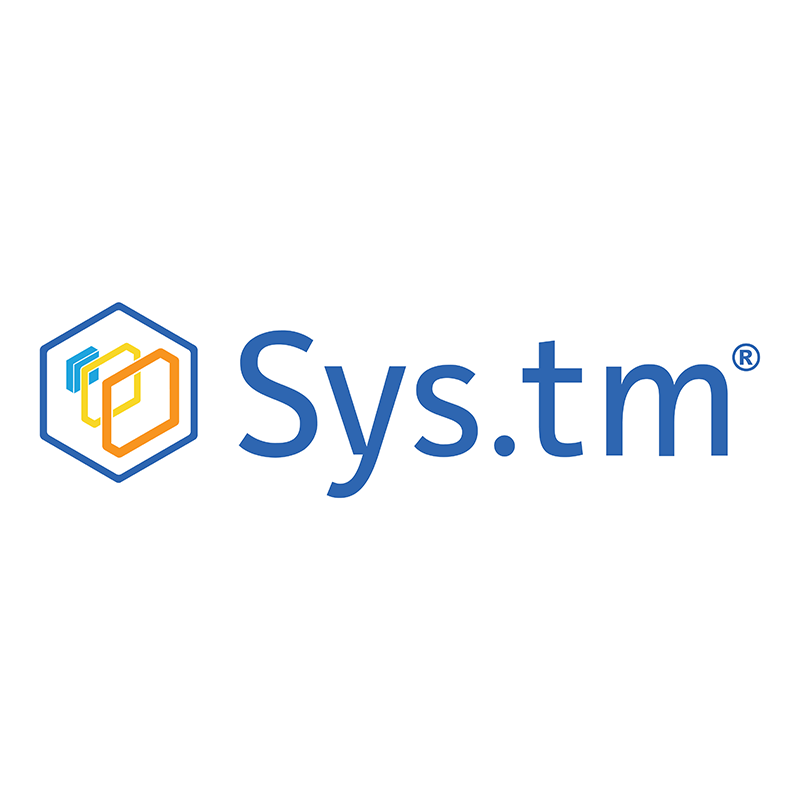What if your technology could flex as fast as your business? Would you be better positioned in today’s competitive marketplace? That’s the core promise of composable technology: enable the exact capabilities you need today and pay only for what you actually use—then adapt instantly as priorities shift. For organizations tired of bloated software tiers and rigid licensing, Sys.tm® (an intelligent information management platform from Digitech Systems) brings that promise to life with a modern, microservices-based architecture, AI, and automation—all delivered with usage-based billing.
What Is Composable Technology?
In plain terms, composable technology breaks software into small, independent “microservices” (feature bundles) that can be turned on or off to match your evolving needs. Instead of buying a monolithic product where most features sit idle or unused, you assemble a right‑sized solution from modular capabilities and expand or contract it as your business changes. We describe this model as a microservices architecture, but it’s also called composable technology or flexible consumption. The key advantage: you pay only for the features you use, with many capabilities billed by usage, so you don’t overpay for rarely used features.
Sys.tm is built on this microservices foundation. In other words, it’s an intelligent, cloud-based information management platform you compose: start with secure file management, then enable Artificial Intelligence (AI), automation, Business Process Management (BPM) and additional services as needed, without locking into overpriced tiers.
Why Composable Technology Matters:

With Sys.tm you can:
- Customize capabilities—leverage powerful information management, automation, and AI in an easy-to-use product that adapts to the ways you already work.
- Turn features on/off as needs change and pay only for what you use, including microtransactions‑based billing for select services.
- Avoid tier traps—ditch rigid license models and right-size your technology for different projects, departments, or objectives.
This flexibility isn’t only about cost control—it’s about speed. When priorities shift (a new compliance requirement, a spike in invoices, an updated approval process), a composable platform lets you reconfigure software in hours, not months by enabling different microservices and automations as needed. Sys.tm’s architecture and billing approach were explicitly designed to match today’s dynamic environment.
How Composable Technology Helps Solve Real Business Problems
Composable platforms allow you to adapt for any variety of document-centric use cases. Below are three common problems and how Sys.tm helps solve them, with capabilities you compose and pay for as you go.
1: Invoice Processing That Scales With Volume

How Sys.tm helps: Add Sys.tm® Intelligence to automatically recognize invoices, extract key fields, and reduce manual data entry. Intelligence combines AI features—OCR for handwriting and text, document classification, and automated invoice processing—into your daily work, so you can boost efficiency while maintaining accuracy. Because Sys.tm is composable, you can enable these capabilities during peak months and scale them back when volumes normalize—paying only for the usage you consume.
Why it matters: Faster, more accurate AP reduces late fees, captures early‑pay discounts, and frees your team for other, higher-value tasks instead of keystrokes. Sys.tm’s usage-based model means the cost curve lines up with real invoice counts.
2: Slow, Manual Document Approvals
The problem: Contracts, HR files, purchase requests, and policy updates move slowly through email chains and shared drives, delaying decisions and creating time-wasting bottlenecks.
How Sys.tm helps: Turn on Sys.tm® Flows, a flexible business process automation (BPM) service that lets you route documents, automate user activities, and configure decision trees to standardize and speed approvals. Because it’s part of the same microservices platform, you can compose Sys.tm Flows with other services like Artificial Intelligence for classification or extraction, so content is recognized and sent to the right step automatically. And since capabilities are modular, you only pay for what you use, avoiding the sunk costs of a standalone workflow suite.
Why it matters: Automated routing reduces cycle times, gives you real-time visibility into where documents sit, and improves compliance by keeping processes consistent and secure, all while aligning cost to actual usage.
3: Secure Access, Collaboration, and Audit Readiness

How Sys.tm helps: Sys.tm centralizes and secures business information, enabling teams to manage files, share documents, and protect data with enterprise-grade controls. Sys.tm brings structure, document control, and auditability, the essentials for regulated environments, and it does so automatically, with no extra configuration required.
Why it matters: When content is organized, searchable, and governed, employees work faster, auditors get answers quickly, documents are secure, and risk is reduced, all without overpaying for a full enterprise tier “just in case.” If and when you need more sophistication, you can turn on capabilities like Robotic Process Automation (RPA), AI summarization, or new workflows and only pay for the usage you incur.
Inside Sys.tm: The Composable, Usage‑Based Platform
Sys.tm is an AI‑powered platform built on a microservices architecture that unifies intelligent information management with automation and usage-based billing. This combination is what turns composable technology from concept into a powerful platform that gives any business a day‑to‑day advantage.
Core characteristics include:
- Microservices (Composable) Architecture – Enable only the capabilities you need; turn them off when you don’t. This is the engine behind Sys.tm’s utility and cost alignment.
- Usage‑Based / Microtransactions-based Billing – Pricing that maps to how much you use features like process automation and AI: a pay‑for‑what‑you‑use model that replaces one-size-fits-all tiers.
- Intelligent Information Management – Securely store, organize, and access business information from anywhere, while enabling collaboration with internal and external stakeholders.
- Automation & BPM (Sys.tm Flows) – Compose rules-driven routing, user tasks, and decision logic to streamline processes across departments.
- AI (Sys.tm Intelligence) – Apply OCR (including handwriting), document classification, automated invoice processing, document summarization, and GenerativeAI capabilities to accelerate knowledge work.
- Optional RPA – Use Sys.tm® Automations robotic process automation (RPA) when you need it to automate repetitive, time-consuming manual tasks.
The result is flexibility and control: since Sys.tm is low-code/no-code, it’s easy to customize the platform to fit each business scenario, and your finance team gains a clean cost-to-value line as usage rises or falls.
How to Implement Composable Technology with Sys.tm
Implementing composable technology doesn’t require a massive overhaul. With Sys.tm, you can move iteratively and start realizing value almost immediately.
 1. Identify Priority Outcomes & High‑Friction Processes:
1. Identify Priority Outcomes & High‑Friction Processes:
Pinpoint the document‑heavy workflows causing the most pain—AP invoices, contract approvals, onboarding packets, compliance attestations—and define the metric you want to move (cycle time, cost per item, error rates). Then map the minimum capabilities required to improve it. Sys.tm’s modular approach means you can enable only the needed features first.
2. Establish a Secure Information Foundation:
Set up the Sys.tm information management base to centralize files and apply security. This creates a single source of truth for content and enables quick wins for time savings in retrieval and collaboration, all in an experience that fits how people already work (which helps adoption) while keeping private information secure and tracking user accesses.
3. Compose the First Automation:
Add Sys.tm Flows to route documents and approvals, and connect Sys.tm Intelligence where AI extraction or summarization can remove manual steps. Because both Flows and Intelligence are components of the same composable platform, setup is straightforward and you can fine‑tune quickly and easily.
4. Pay Only for the Usage You Need:
As workloads ramp up or down, turn services on/off and benefit from usage‑based (microtransactions-based) billing for select capabilities—particularly helpful for seasonal spikes (like year‑end invoice backlogs) or project‑based work.
5. Expand to the Next Use Case:
After your first win (say, successfully automating your Accounts Payable), reuse components for a second scenario (contract approvals or Human Resources requests). With composable tech, each additional workflow is additive, not a new monolith. Sys.tm scales across departments without locking you into oversize tiers.
6. Keep Costs & Value in Sync:
Because Sys.tm aligns cost to consumption, business leaders see a clear Return on Investment (ROI) story: when volumes are high, you’re paying more to process more; when they’re low, you’re not stuck with fixed tier fees. For budget planning and executive reporting, that cost‑to‑value clarity is gold.
Pro tip: If you want to dig into pricing approach and options, check the Sys.tm Pricing Sheet and speak with Digitech Systems about aligning microservices to your roadmap.
Why Sys.tm Over Alternatives?
- Modern architecture, familiar outcomes. Sys.tm blends the power of AI and BPM with the practicality and ease of use of cloud information management, so you get enterprise‑grade capabilities without enterprise‑only complexity.
- Flexibility that mirrors your business. Built for change, Sys.tm lets you activate capabilities when they’re needed and deactivate them when they’re not, avoiding “shelfware.”
- Security and control from day one. The platform is designed to help organizations securely manage and access information, with users citing document control and auditability as tangible benefits.
- AI where it’s useful. From invoice processing to document summarization and classification, Sys.tm Intelligence injects practical AI into everyday tasks, featuring a growing selection of AI models to choose from.
Conclusion: Turn Change Into Advantage With Sys.tm
Competitive advantage today belongs to teams that adapt faster and spend smarter. Composable technology makes that possible by letting you assemble capabilities on demand and pay only for what you use. With Sys.tm, Digitech Systems delivers that flexibility in a secure, AI‑powered platform for information management and automation: one that helps you solve immediate bottlenecks and build a foundation for continuous improvement.
Ready to Bring Your Information to Life?
See how Sys.tm’s composable platform can modernize your information management, streamline approvals, and automate invoice processing, on your terms.
- Request a demo of Sys.tm: Click here
- Download this eBook to learn how microservices & usage‑based billing work
- Explore AI capabilities like automated invoice processing with the Sys.tm Intelligence Data Sheet
- Add workflow (BPM) when you’re ready to take your information management to the next level.

 1. Identify Priority Outcomes & High‑Friction Processes:
1. Identify Priority Outcomes & High‑Friction Processes:


